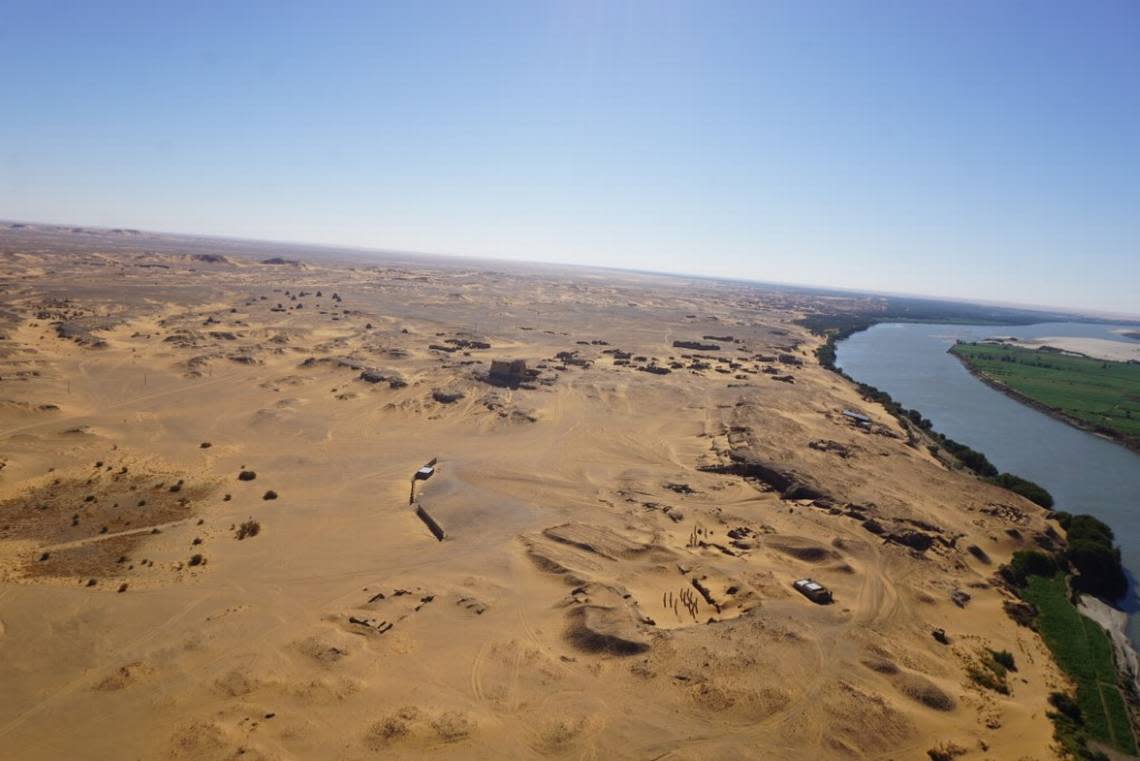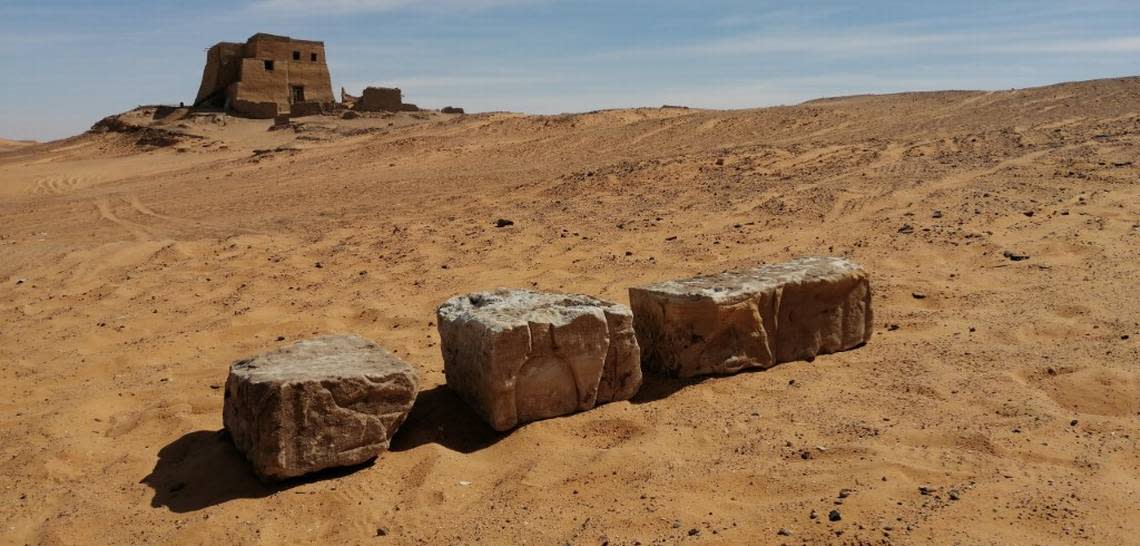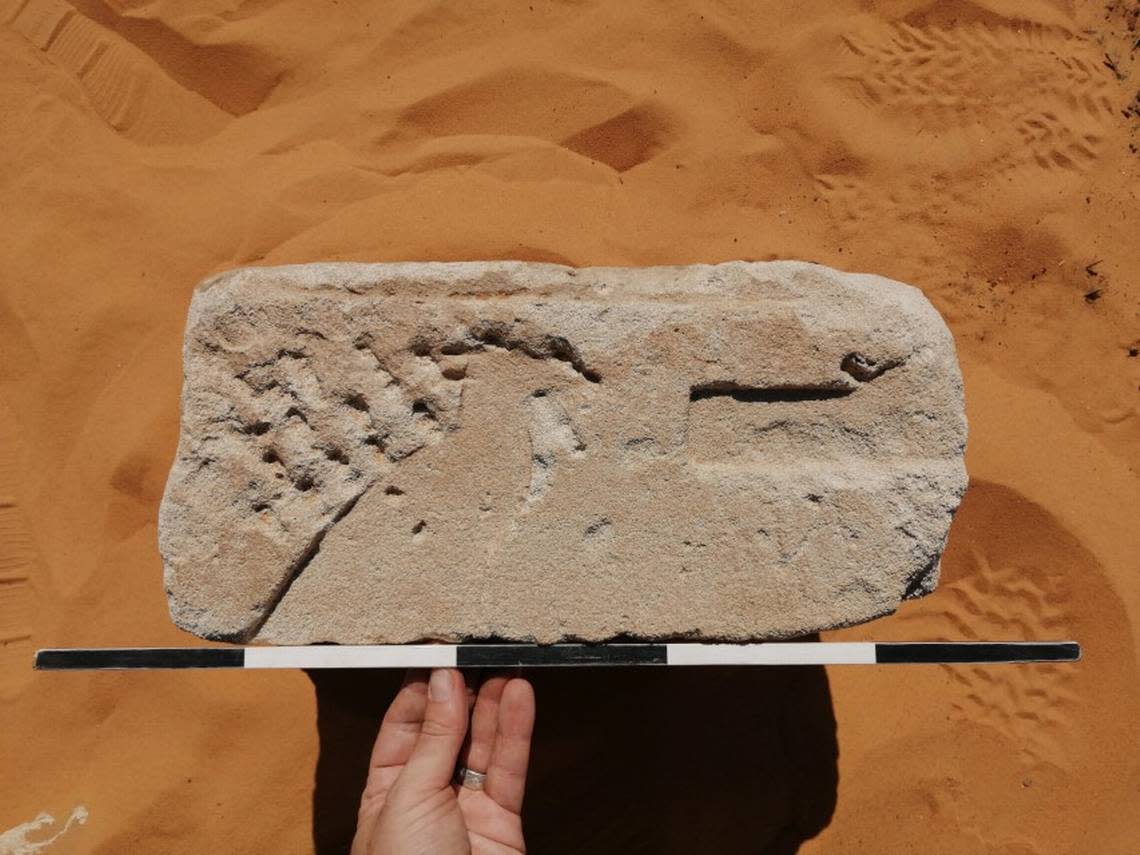Stone from pharaoh’s temple — over 2,500 years old — uncovered in Sudan, photos show
After decades of excavating an abandoned ancient city in Sudan, archaeologists thought they knew what to expect. They were wrong.
Old Dongola is a millennial-old city on the bank of the Nile River in northern Sudan. The urban ruins were the capital city of the kingdom of Makuria from the fifth to 14th century, according to the Polish Centre of Mediterranean Archaeology at the University of Warsaw.
The city flourished under the Makurian kings, becoming a leading urban and religious center. A massive citadel, royal palace, multi-story homes, pottery workshops, churches and a large building that might have functioned as a throne hall were all built under the Makurian kings.
After the kings’ reign ended, Old Dongola became part of the Muslim Sultanate of Funj in the 15th century. The once-thriving city was abandoned 300 years later.

Archaeologists have spent almost 60 years excavating Old Dongola, according to the center. Despite this, the deserted city still held a secret. Until now.
Researchers working around the citadel unearthed a few stone blocks with Egyptian hieroglyphic inscriptions, according to a Monday, Feb. 27, news release from the Polish Centre of Mediterranean Archaeology. The blocks were architectural fragments from a pharaoh’s temple and at least 2,500 years old.

Analyzing the inscriptions, Egyptologist Dawid Wieczorek identified the stones as part of a temple structure built between 1000 and 500 B.C. During this period, an Egyptian dynasty ruled vast sections of northeastern Africa and the Middle East, he said in the release.
The temple fragments were a “unique and unexpected discovery” at Old Dongola for numerous reasons, archaeologists said. Until these stones, researchers had found no other traces of Egyptian construction or from such an early period.

The closest known sites with Egyptian architecture are at least 70 miles away from Old Dongola, experts said. One site, Gebel Barkal, is about 90 miles up the Nile River. The other, Kawa, is about 75 miles down the Nile.
Archaeologists don’t know if the stone blocks found in Old Dongola were from a pharaoh’s temple that once stood at the site or if the blocks were carried there from a temple elsewhere.
Either way, the find is still surprising and may reveal more about ancient Egyptian centers scattered along this stretch of the Nile, Wieczorek said in the release.
Old Dongola is about 260 miles northwest of Khartoum, the capital of Sudan. Archaeological excavations and restorations are ongoing at the site.
2,000-year-old tunnels found under Spanish church give insight into Roman invasion
Animal bone ice skates — made 3,500 years ago — found in tomb in China, photos show
Hikers stumble upon 2,500-year-old item with a fake inscription that fooled experts
